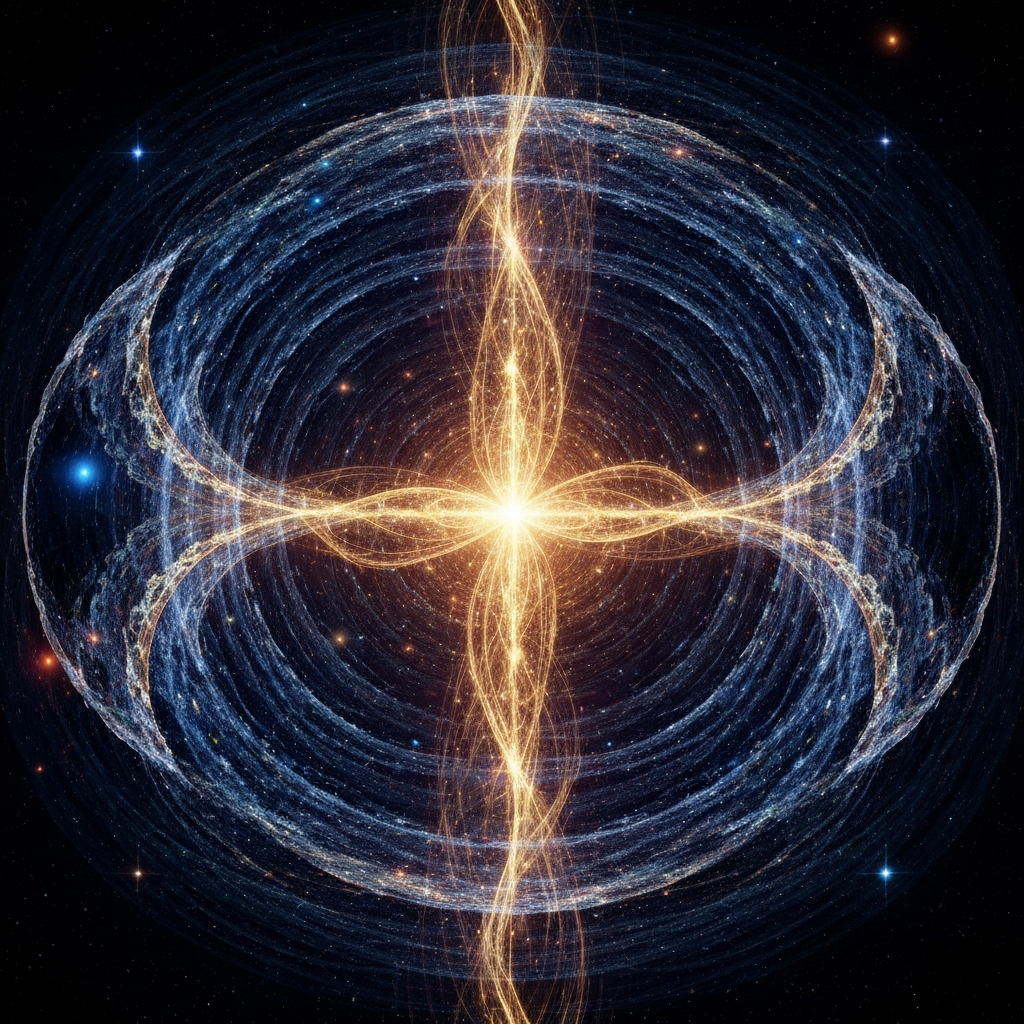
Promise in one line: A simple, human‑sized guide to how physics and the Aitareya Upanishad might be singing the same song—one as numbers, the other as insight.
TL;DR
- Physics: The universe expanded from a hot, dense state (~13.8 billion years ago). Everything—stars, planets, people—arose from that unfolding. At the quantum scale, observation matters.
- Upanishad: In the beginning was Ātman (Self), awareness alone. It willed, “Let me become many,” and manifested as the world. “Prajnānam Brahma”—Consciousness is ultimate reality.
- Shared arc: Both tell a story of unity → diversity and circle a mystery: the observer and the observed.
- Life practice: Hold both lenses—we are stardust and awareness. Let them harmonize.
The One Question, Two Languages
Humans have always asked: Where did this come from? What are we? Two traditions answer— physics, careful and experimental; and the Upanishads, contemplative and poetic. They look different, but they rhyme.
The Story Physics Tells
Wind the clock back and you reach a hot, dense beginning. Space expands, cooling into particles, atoms, and eventually stars. Those stars forge heavier elements in their cores and spread them in supernovae—carbon, oxygen, iron—the stuff of planets, oceans, trees, and us. We are, quite literally, stardust.
Look closer and the world gets stranger. At the quantum level, particles behave like probabilities. Experiments suggest the act of measuring influences outcomes. Physics is precise, yet it keeps pointing to mystery: it can map how things unfold, but who or what is observing?
The Song of the Upanishad
The Aitareya Upanishad begins not with matter, but with awareness. In the beginning was Ātman, one without a second. It willed, “Let me become many.” From that will, manifestation: elements, life, and finally human beings. The Upanishad’s daring claim: the awareness that knows experience is not just a brain‑byproduct; Prajnānam Brahma—Consciousness is reality. The Self is not inside the universe; the universe appears in the Self.
Where the Two Stories Meet
Place the accounts side by side:
- Unity → Diversity: Singularity in physics; singular consciousness in the Upanishad.
- Unfolding: Laws and forces vs. willed manifestation.
- Observer & Observed: Quantum measurement puzzles vs. the seer is reality.
They’re not identical claims, but they gesture toward the same horizon. Physics sketches the body of the universe—its structures and rules. The Upanishad sings of its soul—the witness that knows it.
Line to remember: We are the universe, awake and looking back at itself.
Living Between the Two
You don’t have to choose. Seen only through physics, life can feel mechanical. Seen only through spirit, we can drift from the tangible. Held together, something whole appears: awe for the galaxies, reverence for the awareness beholding them.
Try this: Tonight, step outside. Notice a star. Whisper, “stardust,” and feel your feet on the ground. Then notice the silent noticing itself. That quiet light is what the Upanishad points to.
Key Takeaways (save these)
- Both stories start with One.
- Diversity unfolds by law (physics) or will (Upanishad).
- Observation matters—experimentally and existentially.
- Hold both truths: you are matter in motion and the awareness that knows it.
Notes & Reading
- Cosmology basics: Big Bang/ΛCDM model (~13.8 billion years), stellar nucleosynthesis, supernova element formation.
- Upanishadic line: “Prajnānam Brahma.” See Aitareya Upanishad (Mahā‑Vākya of the Rig‑Vedic tradition).
- Nuance caveat: Physics does not claim consciousness causes the universe; quantum “observer” concerns measurement, not metaphysics. The parallels here are poetic bridges, not proofs.
Author
Atheo — Making timeless ideas readable for the curious mind.